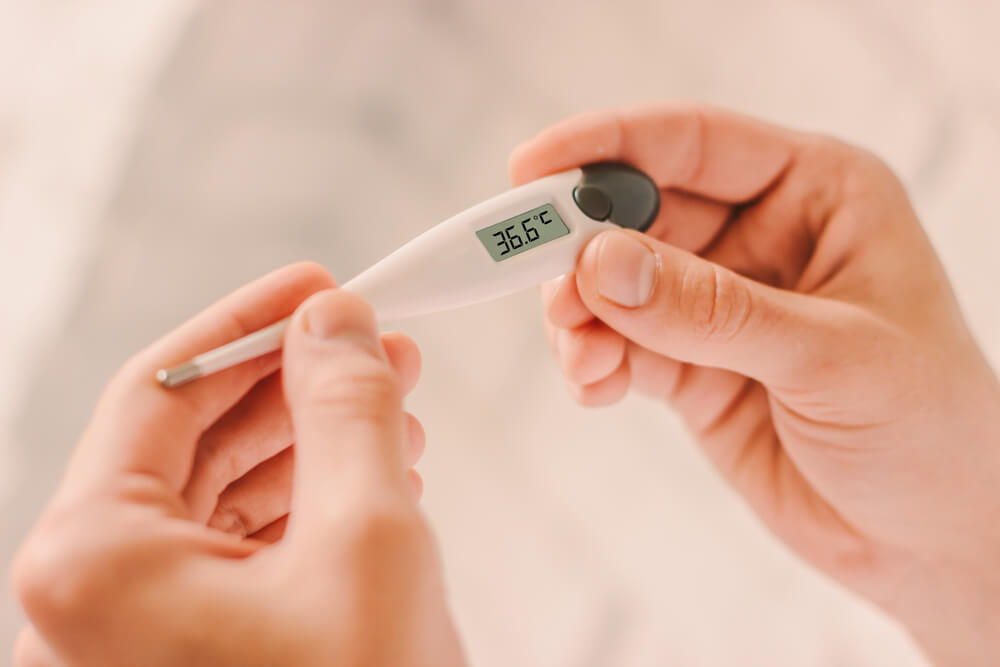Guide to body temperature: which is considered to be the norm, and at what should be alarm
'18.11.2021'
Source: Medusa
Fever is the most common symptom of a new coronavirus infection. It occurs in 90% of cases. True, it can appear with the development of the disease, and not at the very beginning, recalls "Medusaand". Because of this, people began to measure temperature more often, and it turned out that it is rarely 36,6 ° C (97,9 ° F). This was a cause for concern.

That is, everyone has problems, or is 36,6 not ideal?
Of course, 36,6 ° C (97,9 ° F) is not ideal, but the average temperature of healthy people, measured in the mouth. In one study, the scatter of normal values ranged from 35,3 to 37,7 ° C (95,5 - 99,9 ° F), in another - even more. The temperature measured in the ear and temple was lower than 36,6 ° C per hundredths of a degree, under the arm - lower on average by 0,26 ° C, i.e. approximately 36,3 ° C (97,3 ° F) . There is less data on the average normal rectal temperature, but those that are are talking about 36,9 ° C (98,4 ° F).
In addition, during the day in a healthy person, the temperature can vary by half a degree. Also, it is not the same depending on the time of year, age (in older people it is lower), on the phase of the menstrual cycle, on whether a person ate before the measurement (after eating, the temperature rises), and other factors.
But do they somehow determine the elevated temperature?
Yes, and this is very conditional. Medical specialists need to make difficult decisions, often quite quickly - and it is obvious that it is impossible to determine the normal temperature of a particular person in advance, and then, guided by these indicators, say whether it is raised right now. Therefore, the average value is used. For example, the World Health Organization calls for staying home even with mild symptoms and 37,3 ° C (99,1 ° F, without specifying the measurement location). But she suggests to medical workers in an epidemic that she should pay attention to heat at 38 ° C (100,4 ° F) and higher.
The US Centers for Disease Control and Prevention for the relatively new coronavirus infection define fever as 38 ° C or higher (also without specifying the measurement location). Moreover, if the temperature cannot be measured or the person has already taken antipyretic drugs, it is allowed to focus on the patient’s sensations: if he feels that the temperature is elevated, then apparently it is.
It is also known that newborns, older people, patients with chronic renal failure and taking corticosteroids may not have fever when other people have it.
On the subject: Why you can not drink paracetamol for the prevention of coronavirus
Does the fever mean there is some kind of infection?
And that too. But another thing may be in a condition called "hyperthermia." The difference is that during heat, the human body begins to consider the elevated temperature normal and actively supports it. With hyperthermia, the body does not cease to consider the normal temperature normal, but it heats up for various reasons. For example, because of too warm clothes, training in a hot room, hyperthyroidism, and the use of ecstasy. You cannot deal with this condition with conventional antipyretic drugs — physical methods like a bath with cool (not cold) water work here.
It is impossible to distinguish hyperthermia from heat in some universal way - usually doctors rely on other symptoms and related factors. For example, if a person was brought to the hospital in August from a sports field, then hyperthermia is more likely to be suspected. If a person is hot, but does not sweat, this is also evidence in her favor. As well as the situation when conventional antipyretics do not help.
If the temperature is low, is it normal? Can it be too low at all?
Too low a temperature is below 35 ° C (95 ° F) on average. The most obvious reason for this condition is frost on the street or low room temperature. But hypothermia (a condition in which the temperature is lowered) can occur in other cases. For example, with:
- hypothyroidism;
- head injury;
- stroke;
- hypoglycemia (low blood sugar; happens with diabetes);
- anorexia nervosa;
- taking certain medications (e.g. beta blockers);
- lack of physical activity;
- alcohol poisoning.
At the same time, a person can be shaken, or, conversely, he will be very lethargic. He may have confusion, loss of memory, he will speak with difficulty, breathe more often.
How to measure temperature?
The most accurate temperature measurement method available at home is rectal (in the rectum). But the big question is whether such measurement accuracy is needed if it is so inconvenient.
If you decide to measure the temperature in your mouth, you can only do this 20-30 minutes after you smoke, eat something or drink hot or cold. The tip of the thermometer must be placed under the tongue. You need to breathe through the nose.
The American Academy of Pediatrics recommends measurements in the rectum for children under three years of age, because they are unlikely to hold a thermometer in their mouths normally. To do this, lubricate the tip of the thermometer with something like Vaseline, put the child on his stomach in his lap or lay him on his back and bend his legs, and then insert the thermometer 1–2,5 centimeters.
Measurements under the arm are often inaccurate, because people do not hold their hand tightly. However, in the UK it is recommended that children under five years old take temperature measurements (and dissuade from rectal measurements).
The thermometer should always be washed with soap and warm water before use or wiped with alcohol. Each place should have its own thermometer: you cannot use the same one for rectal and axillary measurements.
Which thermometer to choose?
Not mercury. They may be more accurate than the others, but the risks are superior to the benefits. All over the world they are being disposed of.
Doctors usually recommend using electronic thermometers. If you have one, a good idea is to look at the instructions. There you can find information that it is better to hold the thermometer for some more time after the sound signal, so that the result is more accurate.
Infrared non-contact thermometers are convenient in that they show the temperature very quickly, in addition, they can measure the temperature of water and everything else. But you must not forget to look after them according to the instructions so that the readings are as accurate as possible.
Other thermometers (nipples, chemical, nozzles on phones) are less reliable or less studied.
On the subject: Attention - breathing: what symptoms of coronavirus require urgent medical attention
What if the temperature is high?
It depends on your condition. If you feel unwell, take an antipyretic (such as ibuprofen or paracetamol) and drink enough fluids to prevent dehydration. There are no magic numbers, after which it is imperative to bring down the temperature. Some harm directly from the heat can occur only at very high rates - 42 ° C (107,6 ° F) and higher.
True, there is an opinion that fever helps the immune system fight infection, but it cannot be said that there is reliable evidence. Another nuance associated directly with a new coronavirus infection is the suspicion that ibuprofen worsens the course of the disease. However, at the moment, the World Health Organization has not found confirmation of this.
When should I see a doctor if my temperature is high?
In the event that you:
- are pregnant;
- you just left the hospital or you had an operation;
- susceptible to infectious diseases;
- recently returned from a country where there are exotic diseases;
- undergo chemotherapy and the temperature 38 ° C (100,4 ° F) lasts longer than an hour;
- take drugs that suppress the immune system;
as well as:
- fever does not go away for several days or returns;
- a tick has recently bit you;
- you have a serious illness;
- a rash appeared (if it does not turn pale when pressed - it is better to use a transparent glass, then you need to call an ambulance);
- shortness of breath appeared (this may be a sign of pneumonia - call an ambulance);
- severe headache, pain or stiffness in the neck, pain in the back, stomach or side (call an ambulance);
- there was a seizure or confusion (call an ambulance);
- vomiting profusely or severe diarrhea (call an ambulance).
The material is published for educational purposes and is not a medical recommendation. ForumDaily Woman is not responsible for the consequences of self-medication and may not share the views of the author or expert.







